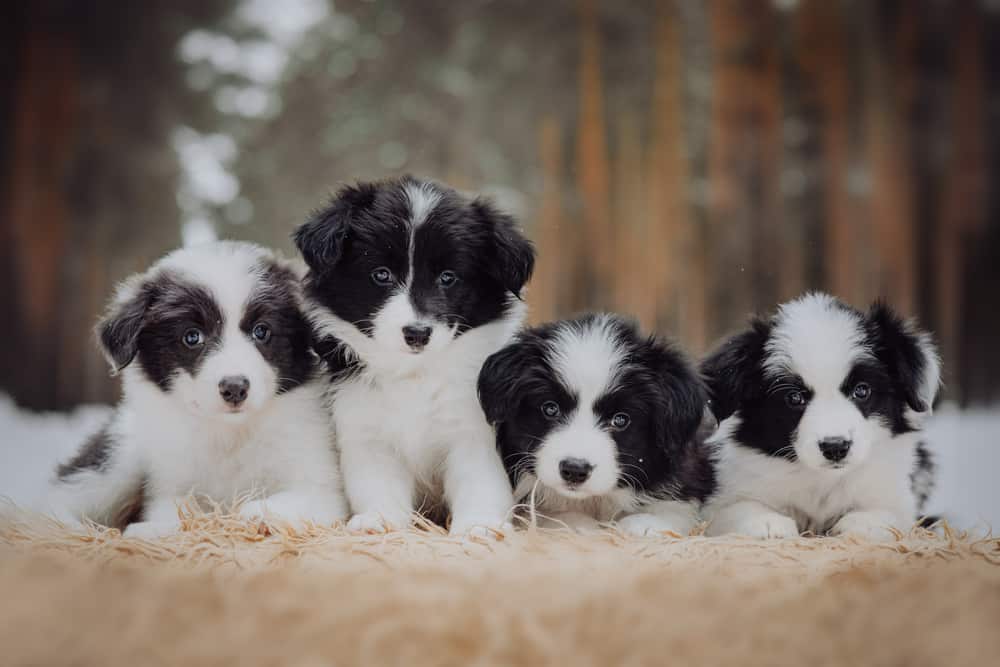tl;dr: Border Collies can get along well with cats, especially with proper socialization and training from an early age.
Border collies and cats: A potential match
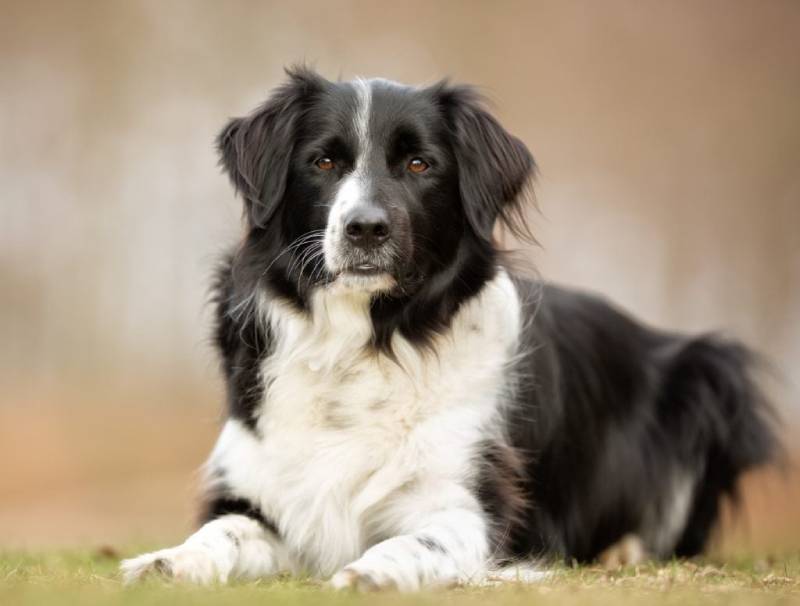
Are Border Collies good with cat? If you’re considering adding a border collie to your family but already have a cat, you may be wondering if these two pets can coexist peacefully. The good news is that border collies can be good with cats, but it’s important to introduce them properly and provide the right training and supervision. In this article, we’ll explore the dynamics between border collies and cats, how to introduce them, and signs of a successful relationship.
Border collies’ herding instincts
Border collies are known for their herding instincts, which can sometimes manifest as chasing behaviors. This instinct is deeply ingrained in their DNA, as they were originally bred to work alongside shepherds in herding livestock. While this instinct can make them excellent working dogs, it can also pose a challenge when introducing them to cats.
Cats’ independent nature
Cats, on the other hand, are known for their independent nature. They are often more self-reliant and prefer to have control over their environment. This can sometimes clash with the border collie’s herding instincts, as cats may feel threatened or overwhelmed by the dog’s attempts to control their movements.
Introducing a border collie to a cat
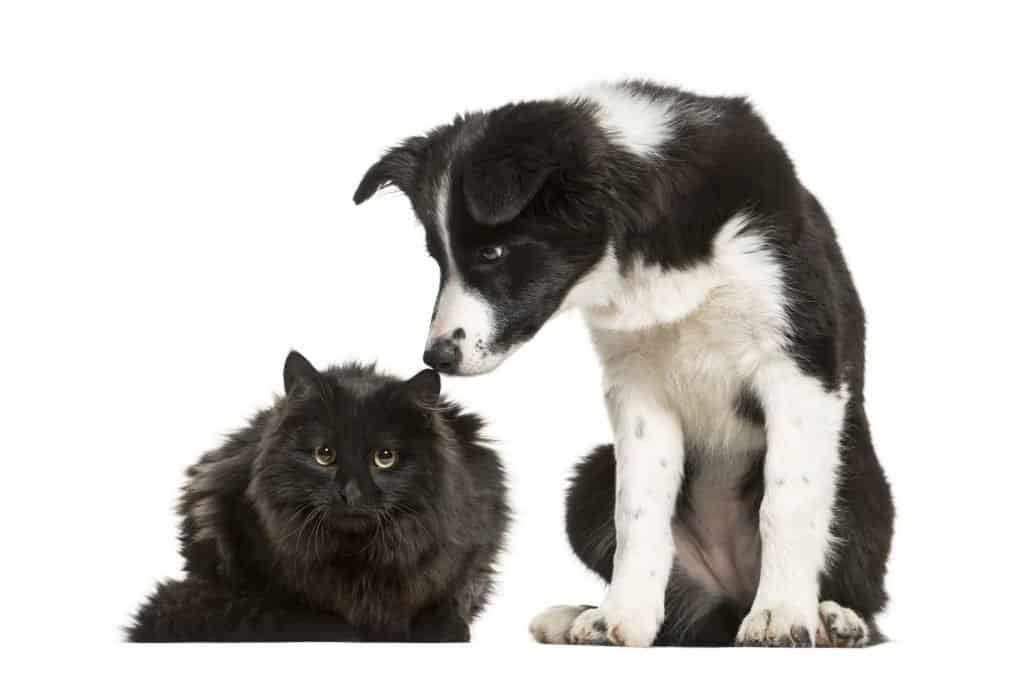
To ensure a smooth introduction between your border collie and cat, it’s important to take it slow and follow a gradual process. Here are some steps to consider:
Gradual introductions
Start by allowing your cat and border collie to become familiar with each other’s scents. You can do this by swapping bedding or using a barrier, such as a baby gate, to separate them while still allowing visual and olfactory contact. This gradual introduction helps both pets become accustomed to each other’s presence without feeling threatened.
Supervised interactions
Once your pets are comfortable with each other’s scents, you can move on to supervised interactions. Keep your dog on a leash during these initial meetings to ensure you have control over their movements. Allow them to sniff each other and observe their body language closely. If either pet shows signs of stress or aggression, separate them and try again later.
Positive reinforcement
During the introductions and subsequent interactions, use positive reinforcement to reward both pets for calm and friendly behavior. Treats, praise, and gentle petting can help create positive associations and reinforce the idea that being together is a pleasant experience.
Training a border collie to coexist with a cat

In addition to the introduction process, training your border collie is crucial for a successful coexistence with your cat. Here are some training tips to consider:
Basic obedience training
Teaching your border collie basic obedience commands, such as “sit,” “stay,” and “leave it,” can help establish boundaries and control their impulses. Consistent training and positive reinforcement will help your dog understand what is expected of them in the presence of the cat.
Teaching boundaries
Set clear boundaries for your border collie regarding their interactions with the cat. For example, teach them to respect the cat’s personal space and discourage any attempts to chase or herd. Redirect their attention to appropriate toys or activities when they show herding behaviors.
Redirecting herding behaviors
If your border collie displays herding behaviors towards the cat, redirect their focus onto more appropriate outlets. Engage them in activities that stimulate their natural instincts, such as puzzle toys or interactive play sessions. This can help redirect their energy and prevent them from fixating on the cat.
Signs of a successful relationship between a border collie and a cat
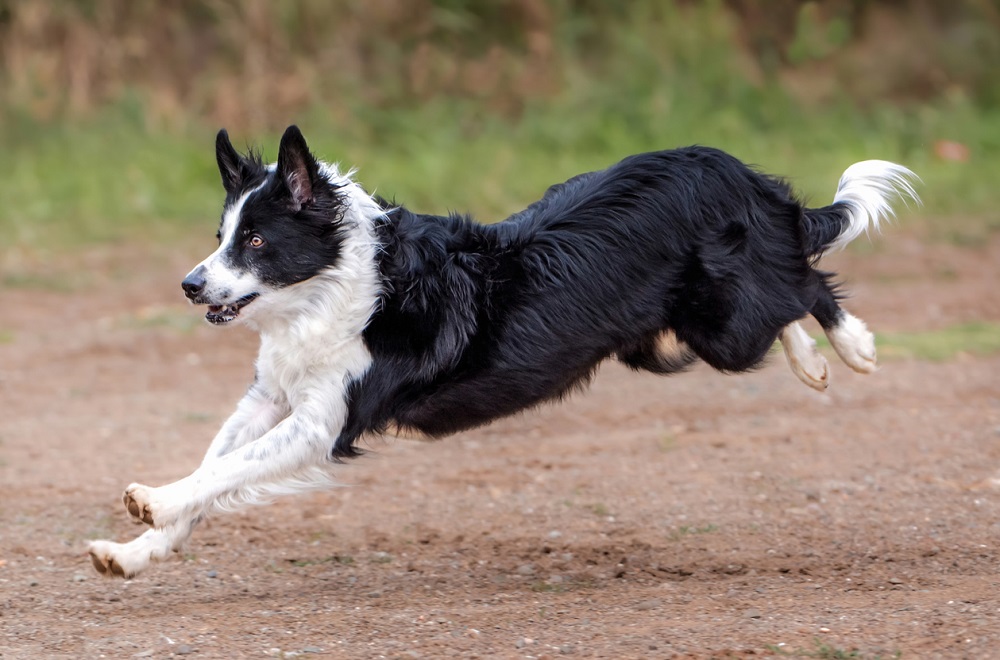
As you continue to work on the relationship between your border collie and cat, keep an eye out for these positive signs:
Relaxed body language
Both pets should exhibit relaxed body language when in each other’s presence. Look for loose, wagging tails, soft eyes, and a lack of tension in their posture. These signs indicate that they are comfortable and at ease with each other.
Playful interactions
Playful interactions between your border collie and cat, such as chasing toys together or engaging in gentle play, are positive indicators of a growing bond. Supervise these interactions to ensure they remain safe and enjoyable for both pets.
Sharing space peacefully
When your border collie and cat can peacefully share the same space without tension or aggression, it’s a clear sign that they have developed a successful relationship. This may include lounging in the same room or resting in close proximity to each other.
When a border collie and a cat may not be a good match

While border collies can generally get along well with cats, there are some situations where it may not be a good match. Consider the following factors:
High prey drive in the border collie
Some border collies may have a high prey drive, which can make it challenging for them to coexist peacefully with cats. If your dog consistently displays intense chasing or predatory behaviors towards the cat, it may not be safe or suitable to have them together.
Aggressive or fearful behavior in either pet
If either your border collie or cat displays aggressive or fearful behavior towards each other, it’s important to address these issues before attempting to create a relationship between them. Aggression or fear can lead to dangerous situations and should be addressed with the help of a professional trainer or behaviorist.
Previous negative experiences
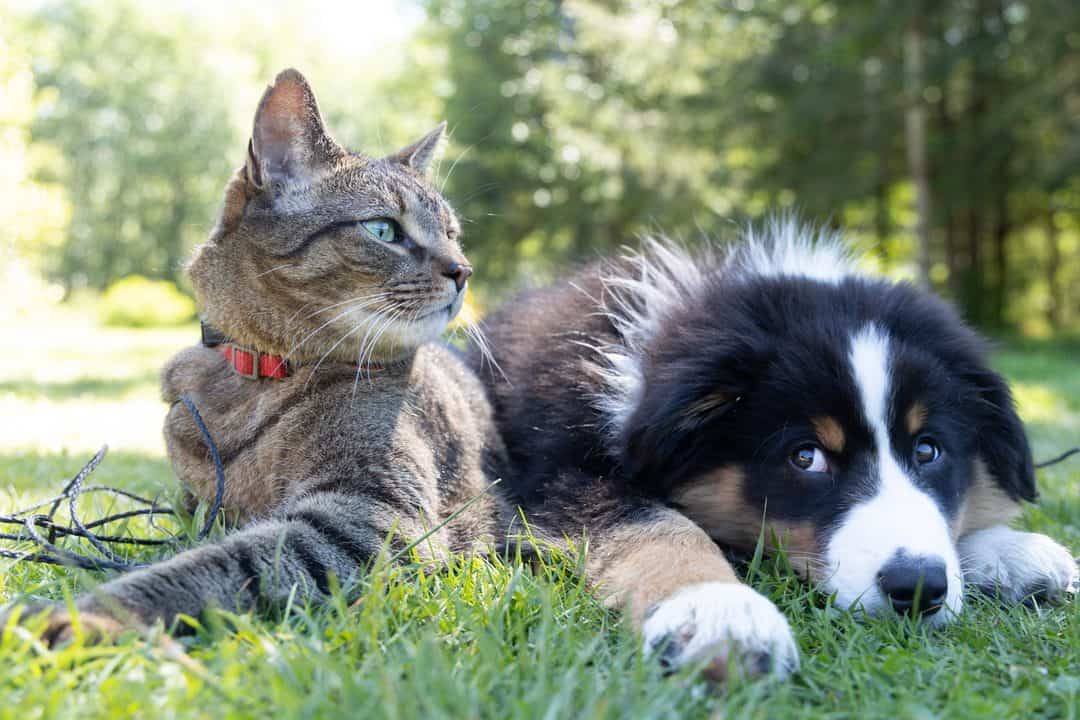
If either your border collie or cat has had negative experiences with the other species in the past, it may require extra time, patience, and professional guidance to help them overcome their fears or anxieties. It’s important to prioritize the safety and well-being of both pets in these situations.
Conclusion on Are Border Collies Good With Cat

In conclusion, border collies can be good with cats, but it requires careful introductions, proper training, and ongoing supervision. By following the steps outlined in this article and paying attention to the signs of a successful relationship, you can create a harmonious environment where your border collie and cat can coexist happily. Remember, every pet is unique, so be patient and adapt your approach to suit their individual needs.
FAQ
-
Should I get a Border Collie if I have a cat?
It depends on the individual dog and cat. Some Border Collies can coexist peacefully with cats, while others may have a strong prey drive and may not be suitable for a home with cats. It is important to properly introduce and socialize them to ensure a positive relationship.
-
Are Collies good with cats?
Collies can be good with cats if they are properly trained and socialized from a young age. However, it is important to note that each dog and cat is unique, and their compatibility may vary. It is recommended to supervise their interactions and provide a safe and controlled environment.
-
Why is my Border Collie so obsessed with my cat?
Border Collies are known for their herding instincts, and this may manifest as an obsession with the cat. They may try to chase, nip, or control the cat’s movements. It is important to redirect this behavior through training and provide mental and physical stimulation to prevent excessive fixation on the cat.
-
Who should not get a Border Collie?
Border Collies are highly intelligent, active, and demanding dogs. They require a lot of mental and physical stimulation, as well as consistent training and socialization. Individuals who cannot commit to providing the necessary time, exercise, and mental stimulation should not get a Border Collie. Additionally, households with very young children or small animals that may trigger the dog’s herding instincts may not be suitable for a Border Collie.
Originally posted 2023-09-25 08:16:45.

